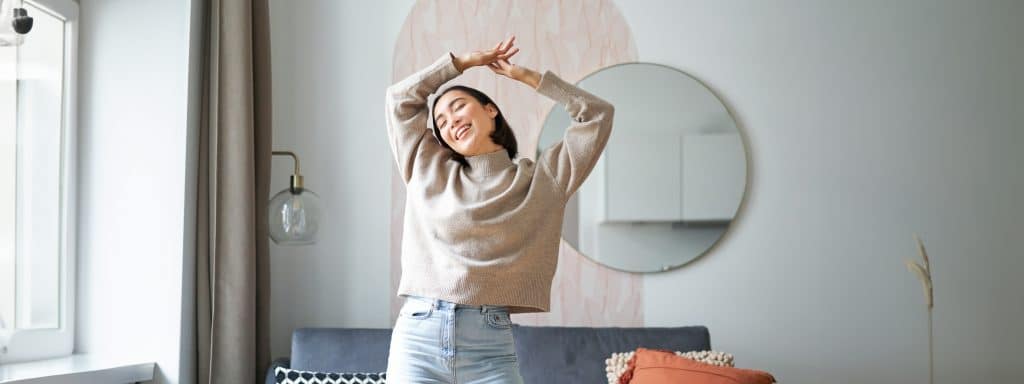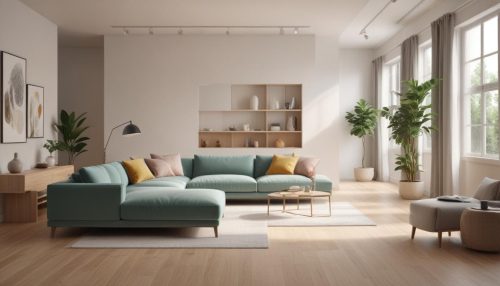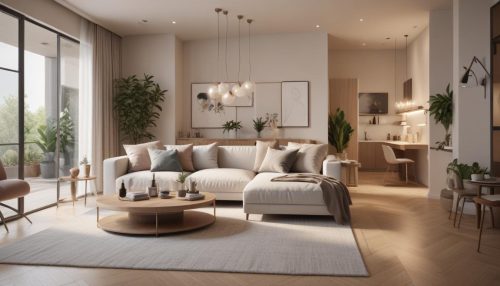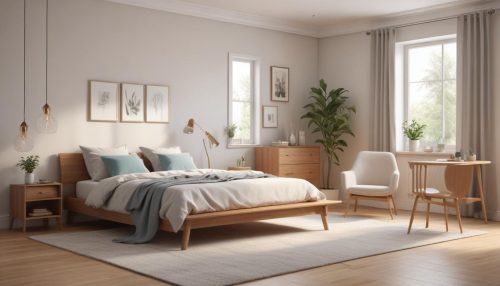How to Make Any Room Feel Calmer
Emma Brooks July 14, 2025
Learning how to make any room feel calmer is more than an aesthetic goal—it’s an emotional one. In today’s fast-paced, noise-filled world, our homes are becoming sanctuaries of calm. Whether you’re resetting after work, finding focus for creative tasks, or simply trying to reduce mental fatigue, the way your space feels can make a measurable difference. With thoughtful choices in light, layout, texture, and color, any room can be transformed into a place of clarity and comfort.
From shifting lighting to rethinking layouts, current trends are proving that small, intentional changes can yield major emotional benefits. And it’s not just about aesthetics—your environment affects how your nervous system functions.

Why Calmer Rooms Matter in a Stressed-Out World
Modern life is built on inputs—notifications, bright screens, cluttered calendars. Unsurprisingly, our physical environments often mirror that chaos. According to a 2017 study published in Frontiers in Psychology, overstimulating spaces contribute to higher levels of stress and reduced cognitive performance.
On the other hand, intentionally calm spaces promote a physiological shift—activating the parasympathetic nervous system, which helps regulate emotions, reduce tension, and improve focus. Learning how to make any room feel calmer is one way to counterbalance digital overwhelm and rebuild peace into daily routines.
The Psychology of Calm Interiors
Studies in environmental psychology continue to show that our surroundings directly influence our emotional state. Whether it’s the color of the walls, the symmetry of the layout, or the type of lighting, each detail contributes to how safe and relaxed we feel in a space.
One 2020 review in Building and Environment found that natural light, uncluttered visual fields, and earth-toned interiors contributed to lower blood pressure and improved mood ratings among participants. That’s a measurable return for small design decisions.
How to Make Any Room Feel Calmer: A Practical, Research-Informed Guide
Here’s a set of actionable techniques you can apply immediately—whether you’re in a studio apartment, home office, or large family space.
1. Clear Out Visual Clutter
Excess items compete for your brain’s attention, even when you’re not conscious of it.
Try this:
- Keep only one or two items on flat surfaces.
- Reduce competing wall art or mismatched decor.
- Use closed storage options to hide loose items.
The less visual input you need to filter, the more mental bandwidth you free up.
2. Adjust Lighting Thoughtfully
Harsh, overhead lighting can contribute to eye strain and anxiety. Softer lighting encourages the brain to relax.
Suggestions:
- Use warm-white LED bulbs (around 2700K).
- Add a small lamp or dimmer to layer light.
- Let in as much natural light as possible during the day.
Balanced lighting is key when you want to make any room feel calmer—especially in transitional areas like entryways or bedrooms.
3. Introduce a Natural Touch
Biophilic elements—anything that echoes nature—are consistently linked with stress reduction. Even a small touch of nature makes a difference.
Add calm with:
- A few well-placed indoor plants
- Wooden textures in flooring or furniture
- Linen, cotton, or stone in soft furnishings
According to Garden on the Wall, preserved greenery and plant-based materials can lower cortisol levels while adding aesthetic depth.
4. Stick to a Soft Color Palette
Colors stimulate emotional responses. While bold hues energize, they can also be overstimulating.
To create calm:
- Use muted greens, warm grays, soft browns, or pale blues.
- Avoid high contrast between wall and furniture tones.
- Consider painting trim or ceilings the same color for a seamless visual experience.
This subtle cohesion can dramatically reduce mental friction.
5. Soften Acoustics
Noise—even if it’s just ambient echo—can keep your nervous system activated. To make any room feel calmer, start with quiet.
Strategies include:
- Area rugs to absorb sound
- Curtains or fabric panels
- Bookcases or plants to diffuse echo
- A sound machine with white or pink noise for sleep spaces
Fewer hard surfaces and more soft materials = a more grounded atmosphere.
6. Use Symmetry and Order
Balance creates predictability, which your brain interprets as safety.
Structure your room with:
- Matching lamps or side tables
- Even spacing between furniture pieces
- Storage bins or trays to group like items
According to a Harvard-cited design article on Skandishop, symmetrical arrangements help lower cortisol and support a sense of emotional control.
7. Designate a Rest Zone
Even in multifunctional spaces, having one corner that says “pause here” is a game-changer.
Try this:
- Add a reading chair and side table
- Place a candle, light, and a book nearby
- Use a different rug or curtain to separate it visually
This micro-zone becomes a daily mental cue for decompression.
Trends Supporting Calm-First Thinking
More people now seek mood-first design. Current lifestyle shifts toward mental wellness are reflected in popular trends like:
- Japandi: The warm minimalism of Japanese design with the natural simplicity of Scandinavian interiors. It emphasizes balance, harmony, and uncluttered living.
- No-tech Bedrooms: Eliminating screens and cables from sleep spaces to prioritize deeper rest, fewer distractions, and healthier sleep hygiene.
- Mood-based Lighting Systems: Circadian-friendly lights that shift from energizing blue to restful amber as the day progresses, supporting alertness during work and relaxation during wind-down hours.
- Aromatherapy Integration: Reed diffusers or essential oil nebulizers subtly infused into decor, not as an afterthought, but as intentional sensory design.
These aren’t aesthetic trends—they’re stress response systems. They reflect a growing awareness that interior design isn’t just about how things look—it’s about how they make us feel and function in everyday life.
Conclusion
Learning how to make any room feel calmer is about tuning your space to your nervous system. Thoughtful light, soft textures, balance, and simplicity don’t just look good—they reduce tension, support emotional regulation, and make transitions easier throughout the day.
A calmer space doesn’t require a full renovation. It starts with a clear surface, a warm bulb, and the decision to design for how you want to feel.ut following rules and more about learning to listen—to what soothes, supports, and slows you down. The result is a home that works with your nervous system, not against it.
Reference
- Saxbe, D. E., & Repetti, R. L. (2010). No Place Like Home: Home Tours Correlate With Daily Patterns of Mood and Cortisol. https://www.ncbi.nlm.nih.gov
- Zhang, Y., et al. (2019). Environmental Design and Well-being. Frontiers in Psychology. https://www.frontiersin.org
- SkandiShop — Symmetry Lowers Stress: skandishop.com





